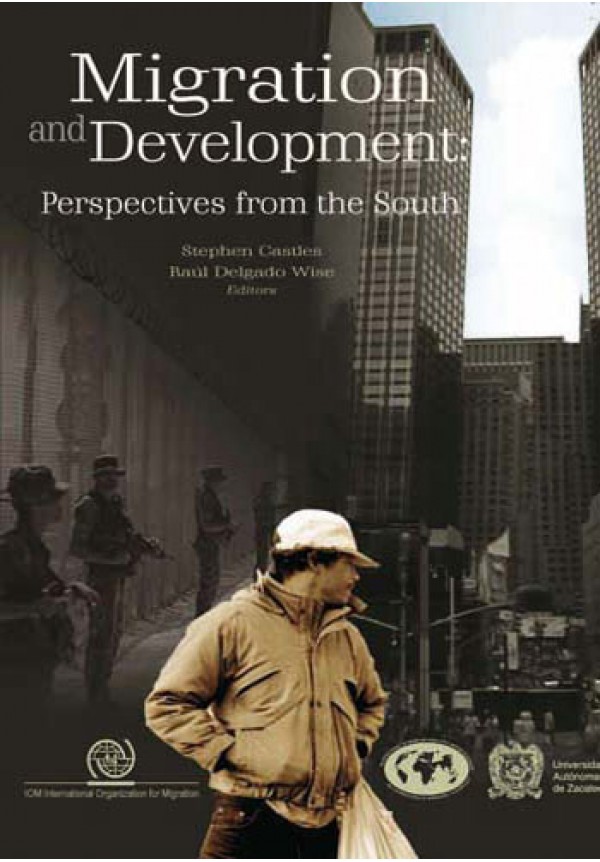Labor Migration and Global Capitalism in Nepal
9. Labor Migration and Global Capitalism in Nepal
Question: Discuss the relationship between labor migration and global capitalism, using Nepal as a case study. How do policies and institutional mechanisms governing labor migration reflect Nepal’s position within the capitalist world-system?
Relevant Readings: Bandita Sijapati and Amrita Limbu, Governing Labor Migration in Nepal.
The relationship between labor migration and global capitalism in Nepal is a complex interplay shaped by economic necessity, policy frameworks, and the broader dynamics of the capitalist world-system. Labor migration has become a critical livelihood strategy for many Nepalis, reflecting both the opportunities and challenges posed by global economic forces.
## Labor Migration in the Context of Global Capitalism
### 1. **Economic Drivers of Migration**
Nepal's labor migration is primarily driven by the lack of adequate employment opportunities and low wages within the country. As the economy struggles with high unemployment rates, particularly among youth, many Nepalis seek better-paying jobs abroad, especially in Gulf Cooperation Council (GCC) countries and Malaysia.
- **Remittances as Economic Lifeline**: The remittances sent back by migrant workers play a significant role in the Nepali economy, contributing approximately 23.5% to the GDP in 2020. This inflow of foreign currency is essential for household income, poverty alleviation, and overall economic stability, thereby reflecting how global capitalism directly impacts local livelihoods.
- **Historical Context**: Labor migration from Nepal has historical roots, dating back centuries, but has intensified in recent decades due to globalization and economic liberalization. The shift towards a market-oriented economy in the 1990s facilitated increased out-migration as the government sought to integrate Nepal into the global economy.
### 2. **Policies and Institutional Mechanisms**
The governance of labor migration in Nepal is shaped by various national and international policies, which reflect the country’s peripheral status in the capitalist world-system.
- **Regulatory Framework**: The Ministry of Labour, Employment and Social Security (MoLESS) and the Department of Foreign Employment (DoFE) are responsible for formulating policies and regulations governing labor migration. However, these policies often struggle to keep pace with the realities of migration, leading to bureaucratic hurdles and inefficiencies that hinder the protection of migrant workers.
- **"Free Visa Free Ticket" Policy**: Introduced in 2015, this policy aimed to shift the financial burden of recruitment from workers to employers in destination countries. However, it inadvertently reduced demand for Nepali labor in certain markets, such as Malaysia, and diminished the bargaining power of workers in GCC countries, reflecting how global economic forces can shape domestic policies in ways that may not benefit the labor force.
### 3. **Impact of Global Economic Forces**
Nepal’s position as a peripheral nation in the capitalist world-system means that its labor migration patterns are heavily influenced by global economic trends.
- **Dependency on Remittances**: The heavy reliance on remittances creates a dependency that can stifle local economic development. While remittances provide immediate financial relief, they can also perpetuate a cycle of underdevelopment by reducing the incentive for domestic job creation and investment in local industries.
- **Vulnerability and Exploitation**: Nepali migrant workers often face exploitation and poor working conditions abroad, particularly in low-skilled jobs. The lack of robust protections and support systems for migrants reflects the broader inequalities inherent in the global capitalist system, where labor is commodified and often undervalued.
## Challenges and Future Directions
### 1. **Policy Gaps and Governance Issues**
Despite the importance of labor migration, Nepal's policies often fail to address the complexities and challenges faced by migrant workers.
- **Bureaucratic Inefficiencies**: The existing regulatory framework is often cumbersome, leading to delays and obstacles in the migration process. This inefficiency can deter potential migrants and expose them to risks of exploitation.
- **Gender Disparities**: Women migrant workers face additional barriers, including restrictions on domestic work and a lack of support systems. Policies need to be more inclusive and supportive of women's migration to ensure their rights and protections.
### 2. **Need for Comprehensive Strategies**
To better manage labor migration and its impacts, Nepal must adopt comprehensive strategies that align with its economic development goals.
- **Skill Development Programs**: Investing in skill development and training for potential migrants can enhance their employability and enable them to secure better-paying jobs abroad. This approach can help mitigate the negative impacts of low-skilled labor migration.
- **Strengthening Bilateral Agreements**: Establishing government-to-government labor agreements with destination countries can improve the conditions for Nepali workers and ensure fair treatment. Currently, such agreements are limited, and expanding them could provide better protections for migrants.
## Conclusion
The relationship between labor migration and global capitalism in Nepal illustrates the challenges and opportunities faced by a peripheral nation in the capitalist world-system. While labor migration serves as a crucial economic lifeline for many Nepalis, the policies and institutional mechanisms governing this migration often reflect the inequalities inherent in global capitalism. Addressing these challenges requires a multifaceted approach that prioritizes the rights and welfare of migrant workers while fostering sustainable economic development within Nepal.
Citations:
[1] https://nepaleconomicforum.org/6767-2/
[2] https://www.nepjol.info/index.php/jpd/article/download/33110/26069
[3] https://link.springer.com/chapter/10.1007/978-3-031-34194-6_5
[4] https://nepaleconomicforum.org/opportunities-and-challenges-of-migration-for-nepal/
[5] https://nepal.iom.int/sites/g/files/tmzbdl1116/files/documents/National%20Level%20POLICY%20BRIEF%20-%20Jan23.pdf
[6] http://www.mcrg.ac.in/PP143.pdf
[7] https://www.ilo.org/media/385556/download
[8] https://nepaleconomicforum.org/is-nepal-ready-for-the-shift-in-global-economic-epicenter/
.jpg)





